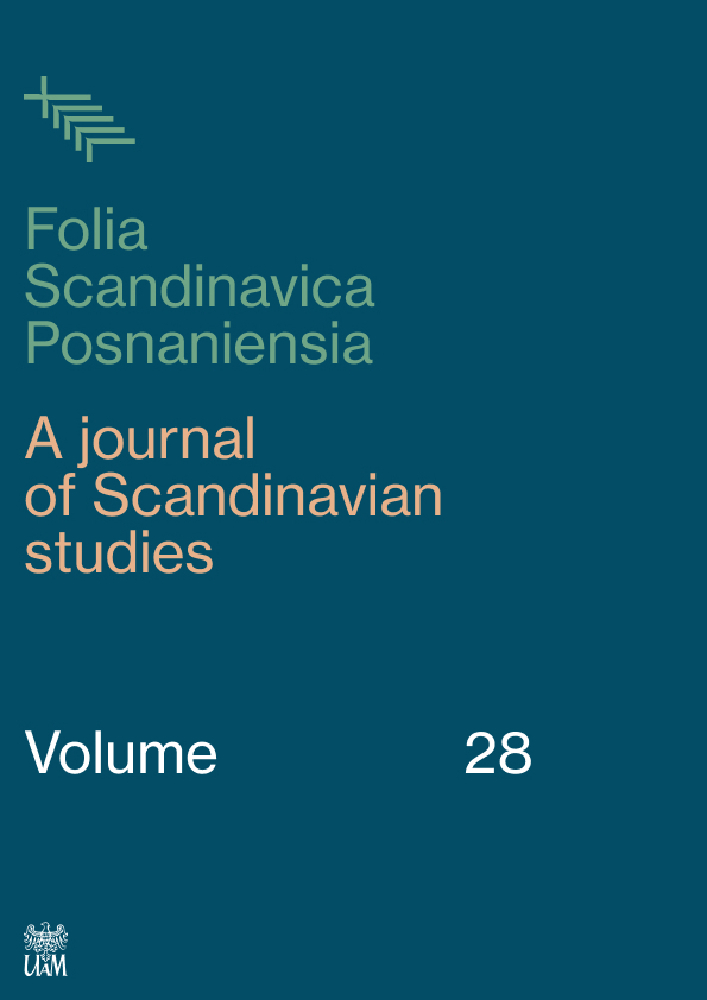Abstract
This study aims to illustrate how visual and auditory perception are conceptualized in Swedish and what differences there are between them. Previous studies often discuss perception in relation to the oppositely directed motions between the perceiver and the object perceived. In the Perceiver-as-Source type, perception occurs when our eyes/gaze reach the object perceived. In the Perceived-as-Source type, perception takes place when sense stimuli reach the perceiver.
The data show two differences between visual and auditory perception. First, we find more metaphorical expressions for visual perception than for auditory perception. Second, we also find that, while visual perception has a stronger connection to the Perceiver-as-Source type, auditory perception is more strongly connected to the Perceived-as-Source type. These two differences are explained by the function of the perceptual organs.
References
Grady, J. E. (1997). Foundations of meaning: Primary metaphors and primary scenes. Ph.D. dissertation. Berkeley: University of California.
Hellquist, E. (1922). Svensk etymologisk ordbok. Lund: C. W. K. Gleerups förlag.
Lakoff, G. (1993a). The metaphor system and its role in grammar. In: K. Beals et al. (eds.), What we think, what we mean, and how we say it: Papers from the parasession on the correspondence of conceptual, semantic and grammatical representations (pp. 217–241). Chicago: Chicago Linguistic Society.
Lakoff, G. (1993b). The contemporary theory of metaphor. In A. Ortony (ed.), Metaphor and thought (2nd ed.) (pp. 202–251). Cambridge: Cambridge University Press. DOI: https://doi.org/10.1017/CBO9781139173865.013
Lakoff, G., & Johnson, M. (1980). Metaphors we live by. Chicago: University of Chicago Press.
Lakoff, G. et al. (1991). Master metaphor list: Second draft copy. Cognitive Linguistics Group. University of California Berkeley. Retrieved February 8, 2020, from http://araw.mede.uic.edu/~alansz/metaphor/METAPHORLIST.pdf
Matsumoto, Y. (2004). Nihongo no shikaku hyōgen ni okeru kyokō idō [Fictive motion in visual expressions in Japanese]. Journal of Japanese Grammar 4(1), 111–128.
NK = Köhler, P. O., & Messelius, U. (2001). Natur och kulturs svenska ordbok. Stockholm: Natur och kultur.
Pietrzak-Porwisz, G. (2010). Så långt ögat når: Visuell perception som metaforfält i svenskan. In: C. Falk et al. (eds.), Svenskans beskrivning 30 : Förhandlingar vid Trettionde sammankomsten för svenskans beskrivning, Stockholm den 10 och 11 oktober 2008 (pp. 281–290). Stockholm: Institutionen för nordiska språk, Stockholms universitet.
SB = Svenska språknämnden (2003). Svenskt språkbruk. Stockholm: Norstedts Ordbok.
Seto, K. (1995). Metaphor shiko [Metaphorical thinking]. Tokyo: Kodansha.
SI = Luthman, H. (2017). Svenska idiom: 5.000 vardagsuttryck (3rd ed.). Lund: Folkuniversitetets förlag.
SO = Svenska Akademien (2009). Svensk ordbok. Stockholm: Norstedts.
Stefanowitsch, A. (2006). Words and their metaphors: A corpus-based approach. In: A. Stefanowitsch & S. Th. Gries (eds.), Corpus-based approaches to metaphor and metonymy (pp. 63–105). Berlin: Mouton de Gruyter.
Sullivan, K., & Jiang, W. (2013). When my eyes are on you, do you touch my eyes? A reclassification of metaphors mapping from physical contact to perception. In: T. F. Li (ed.), Compendium of cognitive linguistics research, Volume 2 (pp. 189–200). Retrieved February 8, 2020, from https://ssrn.com/abstract=2387216.
Sweetser, E. (1990). From etymology to pragmatics: Metaphorical and cultural aspects of semantic structure. Cambridge: Cambridge University Press. DOI: https://doi.org/10.1017/CBO9780511620904
Svenska Akademien. (1893–). Svenska Akademiens ordbok. Lund. Retrieved February 8, 2020, from www.saob.se
Talmy, L. (1996). Fictive motion in language and ‘ception’. In: P. Bloom et al. (eds.), Language and space (pp. 211–276). Cambridge, MA: MIT Press.
Yamanashi, M. (1997). Visual perception, tactile experience and spatial cognition. In: M. Ukaji et al. (eds.), Studies in English: Festschrift for professor Akira Ota on the occasion of his eightieth birthday (pp. 837–845). Tokyo: The Taishukan Publishing Company.
Yamanashi, M. (2010). Metaphorical modes of perception and scanning: A comparative study of Japanese and English. In: A. Burkhardt & B. Nerlich (eds.), Tropical truth(s): The epistemology of metaphor and other tropes (pp. 157–175). Berlin/New York: De Gruyter. DOI: https://doi.org/10.1515/9783110230215.157
CORPORA
PA = Parole korpus: https://spraakbanken.gu.se/resurser/parole
Corpora with texts from Göteborgs-Posten
GP 1994: https://spraakbanken.gu.se/resurser/gp1994
GP 2002: https://spraakbanken.gu.se/resurser/gp2002
GP 2006: https://spraakbanken.gu.se/resurser/gp2006
GP 2007: https://spraakbanken.gu.se/resurser/gp2007
GP 2008: https://spraakbanken.gu.se/resurser/gp2008
License
Copyright (c) 2020 Yuki Minamisawa

This work is licensed under a Creative Commons Attribution 4.0 International License.
